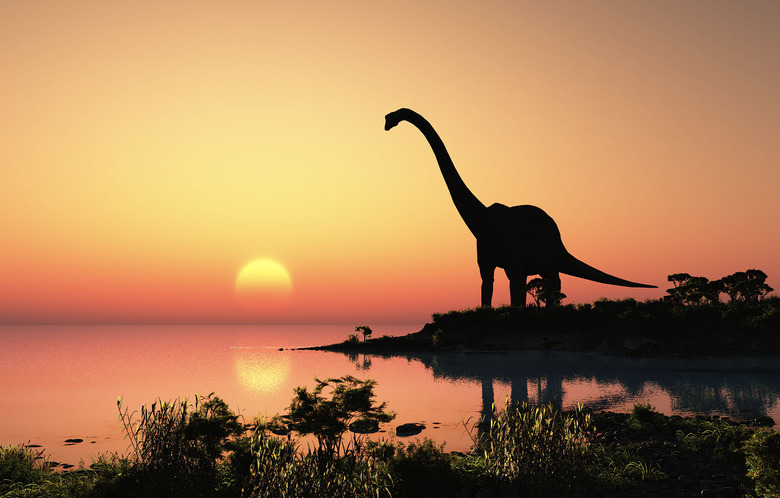The Dinosaur-Killing Asteroid Gave Earth Its Rainforests, Study Says
When you imagine what the planet was like during the time of the dinosaurs it might be tempting to imagine the long-extinct creatures crawling through the colorful flora of today's rainforests. We've all seen documentaries and fictional portrayals of dinosaurs in such settings, but new research suggests that the rainforests were a whole lot different when the dinosaurs ruled the land, and we have the dinosaur-killing asteroid to thank for the tropical rainforests we see today.
As Ars Technica reports, a new paper published in Science provides us with a picture of what the thick forests in places like Colombia were like before and after the arrival of the colossal asteroid that slammed into present-day Mexico. The dramatic climate shift that the impact triggered completely changed the makeup of plant life across the globe, but rainforests may have seen the biggest changes of all.
When the asteroid arrived it kicked up an incredible amount of dust and debris which was pushed into the atmosphere and began circling the globe. This is what ultimately killed off the dinosaurs on a planet-wide scale, as it reduced the amount of sunlight making it to the surface. Plants began to die off first, and when that happened it's believed that the entire food chain collapsed.
Plant-eating dinosaurs had nothing to eat and starved, and carnivores that feasted on those plant-eaters followed soon after. It was a rough time for life as we know it, and the plant die-off hit forests especially hard. All plants suffered in one way or another, and the large coniferous trees that dominated the ancient rainforest were no exception. The trees died off at a rapid pace, and fossil evidence suggests that they never made a comeback in those regions.
When the dust finally settled and the once-forested regions began to get adequate sunlight once again, the plants that took over were nothing like the ones that once ruled these regions. They were colorful, with blooming flowers and fern-like leaves. These new plants promoted a closed-canopy structure, with many layers of plant life instead of the large conifers that reached toward the sky with little between them and the ground below.
"[Flowering plant life] came to dominate the forests over the 6 million years of recovery, when the flora began to resemble that of modern lowland neotropical forest," the researchers write. "The leaf data also imply that the forest canopy evolved from relatively open to closed and layered, leading to increased vertical stratification and a greater diversity of plant growth forms."
The tropical rainforests we see today just didn't exist during the age of the dinosaurs, and it took the asteroid impact that killed those incredible creatures to change the composition of those forests forever.
